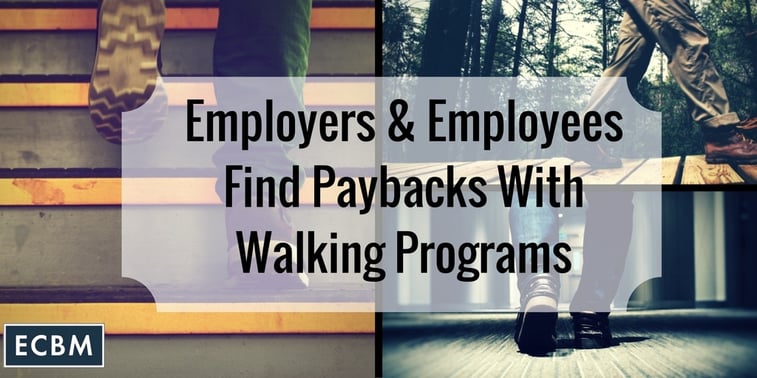
More workers are lacing up their sneakers during lunch breaks, taking the stairs, and parking on the far end of the parking lot than ever before. Organizations are realizing the high return on investment on walking programs, and the incentives of both material rewards and prizes along with the reward of good health are improving employee morale.
Health Benefits Galore
People typically walk between 5,000 to 6,000 steps per day. Did you know that by increasing your steps by 3,000 to 4,000 steps per day, you are:
- Doing your heart good by reducing your risk of developing high blood pressure
- Improving your body’s ability to process sugar and reduce your risk of developing Type 2 diabetes
- Elevating your mood by reducing stress, depression, and feelings of anxiety
- May help prevent weight gain and even produce weight loss
- Mental acuity and memory can also be improved with physical activity.
Walking does not require special equipment and is not a particularly strenuous form of exercise. All you need to get started is a pair of comfortable shoes and about 30 minutes a day. The health benefits are the same if you are able to complete one 30 minute session or break it up into shorter periods of activity.
If you want to “STEP IT UP”
- Add weights while you walk
- Invest in a pedometer, typical models run $20-$40. Some have different features including different modes and some have the ability to sync with a computer or mobile device to track activity.
- Your smart phone can act as a pedometer as well. Download any of a number of apps available for most devices and start walking.
- Break your walk into measures of fast pace and slow pace. Increase the amount of fast pace units as you progress.
- Find a walking buddy. This encourages you to your commitment and gets others moving too.
- Before beginning any walking program, consider discussing your exercise plans with your doctor, particularly if you have certain health issues.
High Return On Low Investment
- For every $1 invested in worksite wellness, organizations can receive up to $3 in return.
- Active employees are sharp employees. Exercise increases the flow of oxygen, which directly affects the brain.
- According to Reuters, just these three common chronic conditions- Asthma, diabetes, and hypertension - are associated with 164 million lost working days per year. This is at a cost of $30 billion to employers.
- Can help reduce costs of employee health benefits.
- As an exercise program, walking has the lowers dropout rate; according to the American Heart Association.
More resources:
American Heart Association
Walking Spree
10,000 Steps USA
This article is for informational purposes only and is not intended as medical advice. For further information, please consult a medical professional.
